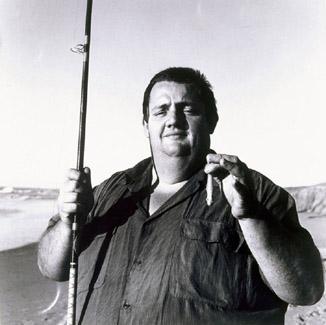Australian Postwar Photodocumentary
dal 11/6/2004 al 8/8/2004
Segnalato da
11/6/2004
Australian Postwar Photodocumentary
Art Gallery of New South Wales, Sydney
The show explores the diversity of approach and definitions of the documentary in photography in this country. This exhibition explores the various guises and definitions of the documentary in Australian photography from 1940-1985 and includes work by Max Dupain, David Moore, Sandy Edwards, Robert McFarlane, Mervyn Bishop and others.

Australian postwar photodocumentary explores the diversity of approach and definitions of the documentary in photography in this country.
The photograph can be described as a barometer of history, life and culture. Yet photography is always a creative treatment of reality that has been chosen, timed, framed, cropped, printed and exhibited in ways chosen by a photographer. It is a subjective vision of the world.
The exhibition Australian postwar photodocumentary traces the notion of the documentary from 1945 through specific bodies of work by photographers including Max Dupain, David Moore, Axel Poignant, David Potts, Fiona Hall, Gerrit Fokkema, Mervyn Bishop, Sandy Edwards and Roger Scott.
Coined by the British filmmaker John Grierson, the term 'documentary' was used to describe "straight" or immediate imagery that echoed social concerns. Documentary photographers aimed to capture what was in front of them, record an event and document a situation with perceived neutrality; the camera as proof and modus operandi. Increasingly the value judgements inherent in this definition of documentary were questioned; by the 1970s, artists were working to critique the language of representation.
Drawn from the Art Gallery of New South Wales collection, Australian postwar photodocumentary includes a cross section of artists working within the documentary idiom. In his forty year career Mervyn Bishop has taken photographs of some of the major events in Australian history - his image of Gough Whitlam pouring soil into the hands of traditional land owner Vincent Lingiari in 1975, for example, records a significant moment in race relations in this country.
Also included are photographs by Sydney photographer Roger Scott, who uses the camera surreptitiously to capture his subjects unaware. Scott's images portray aspects of a Sydney lifestyle and feature events such as the Vietnam moratoriums in the 1970s and the local Easter shows. In contrast, Gerrit Fokkema's work explores the suburbs as an estranged milieu, with desolate streets and curious people. And finally, Sandy Edwards' images primarily focus on women and their experiences of work, family and relationships.
Curator's Talk - Wednesday 16 June at 1pm. Curator of Australian postwar photodocumentary, Natasha Bullock, will give a public talk in the exhibition. Admission free. No bookings.
IMAGE: Mervyn Bishop, Bob's Catch, Shoalhaven Heads 1974. Collection of the Art Gallery of New South Wales
Hours:
10am to 5pm 7 days a week
Art After Hours – every Wednesday until 9pm
Jan Batten
Press Office
Telephone 61 2 9225 1791
Ground Floor project gallery
Art Gallery of New South Wales
Art Gallery Road
The Domain, Sydney, Australia



